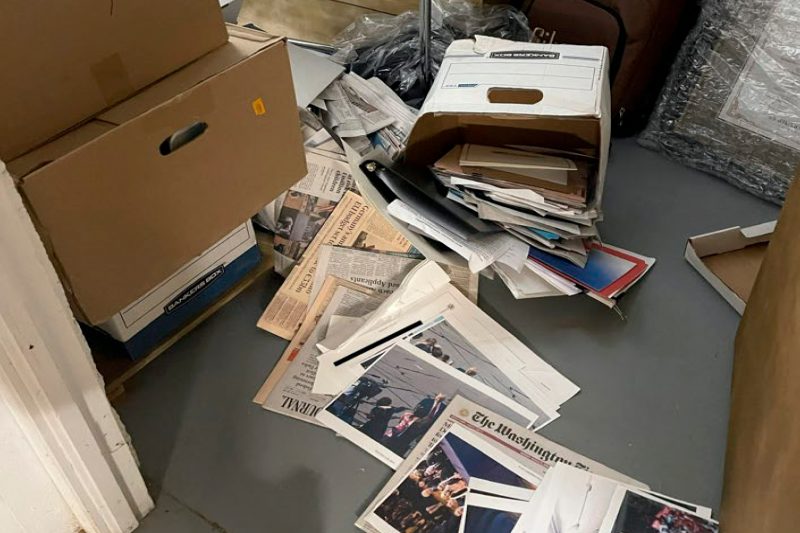When the Mueller report came out in 2019, President Donald Trump not only falsely claimed it showed “NO COLLUSION” but also falsely claimed it showed “NO OBSTRUCTION.”
In fact, special counsel Robert S. Mueller III had isolated at least five instances in which Trump’s conduct might have met the criteria for obstruction of justice; he just said that it wasn’t his place to accuse Trump of crimes, given long-standing Justice Department guidance that sitting presidents can’t be charged. Mueller later made explicit that his report hadn’t cleared Trump of obstruction.
It’s tempting to view Trump’s proclamations as mere political rhetoric. But the emerging evidence in Trump’s indictment in the classified-documents case paints a picture of a man unchastened.
Trump now has been charged with obstruction — not for his actions related to the Russia investigation, which was Mueller’s purview, but for his failure to return classified documents he took after leaving the White House. And the updated charges in the superseding indictment special counsel Jack Smith unveiled last week make clear that this case will be in large part about the coverup.
The charges also describe conduct that looks a lot like what Mueller keyed in on.
The superseding indictment against Trump describes a brazen alleged attempt to delete key security camera footage at Trump’s Mar-a-Lago estate. The alleged effort came in the days after the Justice Department sent a subpoena for the footage on June 24, 2022. Two Trump employees who had been in contact with Trump at this time allegedly visited a security guard booth and then surveyed an area where cameras were, next to the storage room where documents were stored. One of the employees later asked another employee to delete 45 days’ worth of footage, repeatedly citing a request from “the boss.” The alleged conversation came just three days after the subpoena arrived.
How directly the government can tie this activity to Trump is to be determined. But it’s hardly the only example of alleged obstruction.
Indeed, as with the Mueller report, the indictment describes multiple episodes:
Trump attorney Evan Corcoran’s notes cite three examples of Trump seeming to suggest that documents be withheld despite a separate subpoena for them. Allegedly, Trump repeatedly and approvingly cited a Hillary Clinton aide who had deleted some of her emails. Trump allegedly said, according to Corcoran, “Wouldn’t it be better if we just told them we don’t have anything here?” and, “Well, look, isn’t it better if there are no documents?” And in a meeting with Corcoran, Trump allegedly made a plucking motion that Corcoran understood to mean, “Well okay why don’t you take them with you to your hotel room and if there’s anything really bad in there, like, you know, pluck it out.”Shortly after a May 11, 2022, subpoena for the documents, Trump’s co-defendant Waltine “Walt” Nauta allegedly repeatedly moved boxes from the storage room to Trump’s residence: one on May 22, three on May 24, 50 on May 30 and 11 on June 1. The government said the latter three instances, totaling 64 boxes, were conducted “at Trump’s direction,” with one of them occurring an hour after a brief phone call with Trump.The day Corcoran was due to review the boxes on June 2, 2022, Trump allegedly had a brief phone conversation with Nauta, after which Nauta and Carlos De Oliveira, who is now the third co-defendant in the indictment, moved approximately 30 boxes — fewer than half of the boxes removed — back to the storage room.Because not all boxes were searched, Trump attorney Christina Bobb allegedly signed a false certification stating that all classified documents had been returned. (Bobb has not been charged, but the government says Trump obstructed justice by “causing a false certification to be submitted.”)
These allegations echo the Mueller report in some key ways, particularly when it comes to Trump’s interactions with lawyers.
Similar to Trump’s allegedly causing a false certification that no classified-marked documents remained in his possession, Trump allegedly urged White House counsel Donald McGahn to falsely deny that Trump had asked him to fire Mueller.
(The Mueller report said there was “substantial evidence” this was meant to influence McGahn to “deflect or prevent further scrutiny” of Trump.)
The Mueller report also entertained the idea that Trump’s conduct toward his personal attorney Michael Cohen resulted in Cohen’s delivering false testimony. It noted that Trump’s entreaties for Cohen to stay loyal meant something that, in the indictment’s words, “they both understood would require false testimony.”
More broadly, the Mueller report said there was evidence that Trump “used inducements in the form of positive messages in an effort to get Cohen not to cooperate.” Trump also told his then-attorney general, Jeff Sessions, that if he un-recused himself and took back supervision of the Mueller probe, he would be a “hero.”
This in some ways echoes Trump’s alleged suggestions to Corcoran and another attorney that the Clinton aide who deleted emails was to be celebrated. Trump allegedly said of the aide, according to Corcoran’s notes, “he was great, he did a great job. … And he was great. And he, so she didn’t get in any trouble because he said that he was the one who deleted them.”
The indictment notes Trump then repeated the story, the readily apparent implication being he was trying to send a message.
It will be up to the government to prove these kinds of insinuations were intentional and that Trump was involved with things such as moving boxes and attempting to delete security camera footage. But to the extent it does, it will merely fill out a picture already outlined in 2019.

